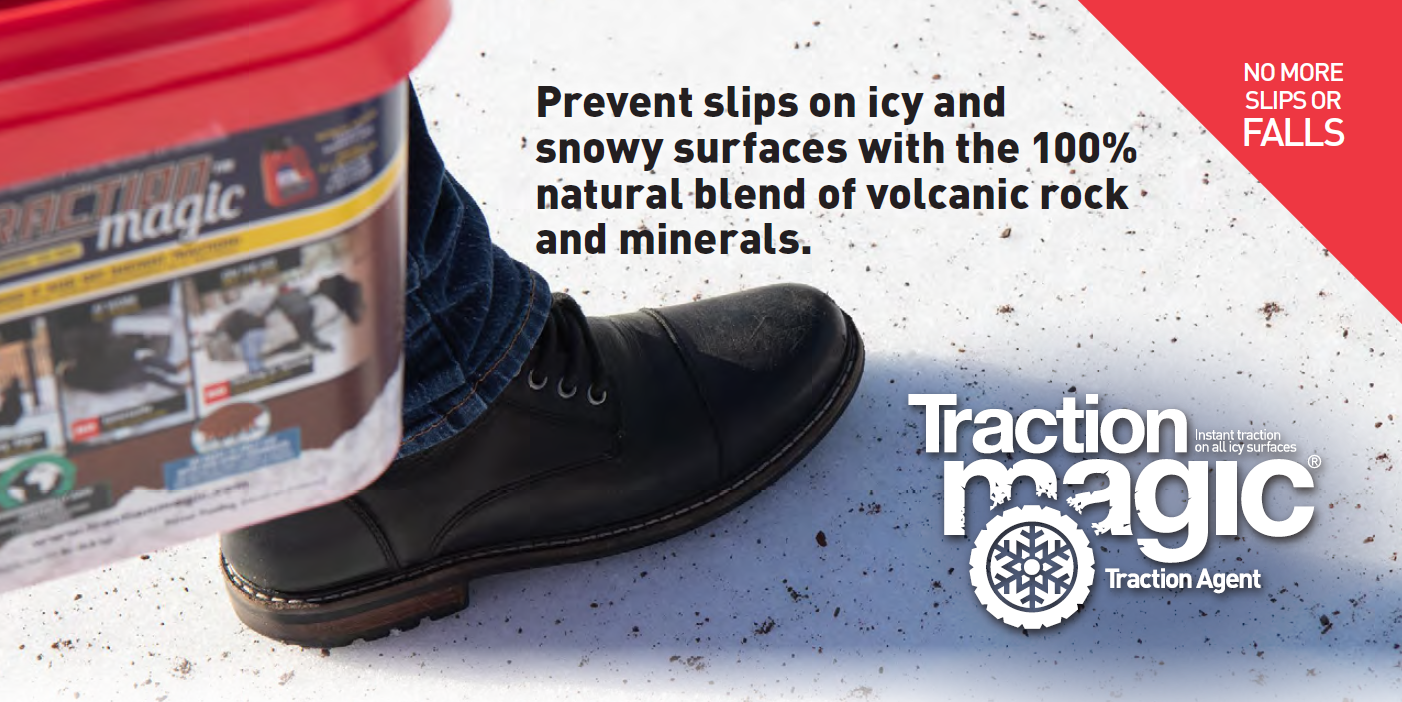11 Things To Look For In An Ice Melt For Roofs
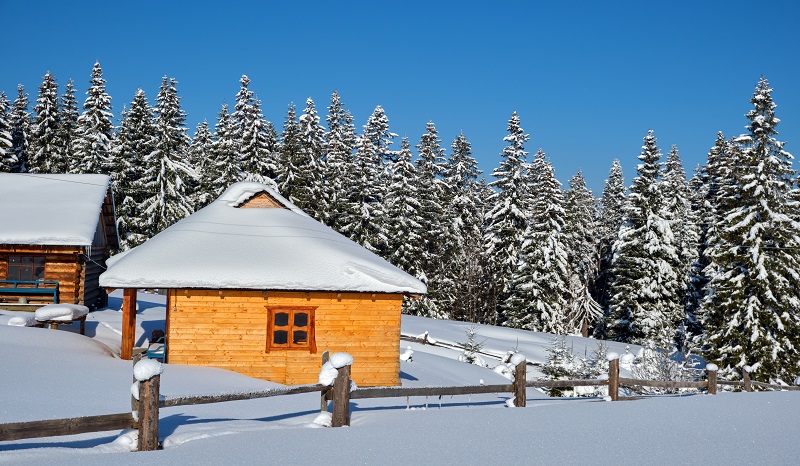
Icicles are lovely icons of the festive season, but they may also be a harbinger of trouble. You may encounter one of two issues if you have icicles hanging from your roof. Your roof and gutter system may fail. Shingles may break, resulting in a severe leak in your home. A falling icicle, on the other hand, could cause damage. It’s critical to keep ice off your roof for your safety and the safety of others around you. It necessitates the use of the best ice melts for roofs.
Determine which roof melt is ideal for your property.
- What Do You Need To Know About Roof De-icer?
- Ice Melt For Roofs
- 11 Things To Look For In An Ice Melt For Roofs
- Type Of Chemicals To Avoid In A Roof Safe Ice Melt
- How To Select The Best Ice Melting For Roofs?
- Other Ice Melt Products
What Do You Need To Know About Roof De-icer?
Ice dams are something you should be aware of if you live in a cold area. When snow lands on a roof, this happens. It may eventually melt, causing water to run down the edge of your roof. They could then refreeze, causing ice to form. These common occurrences, known as ice dams, come at a cost.
Ice can develop behind roofing and cause leaks. The dams can also leave sharp icicles hanging from your roof at other times. They turn into a hazard, causing damage to anything or everyone beneath them. You must be proactive if you do not want ice to form on your roof and, for this, you need roof snow melt.
People (and pets) strolling beneath ice dams are at risk, and the roof and gutter system are also at risk. The ice dam becomes heavier as it grows. When the weather warms up enough for the ice to melt, the ice dam can fall to the ground, potentially destroying your gutter in the process. Ice dams can also cause damage to the roof in the following ways: When water enters between shingles and freezes, it expands, loosening the shingles and entering into the layers of the roof until there is a leak or damage to the interior ceiling.
Gaia Enterprises Inc. delivers 100% pet-safe and environmentally friendly winter products. Safe Paw, our flagship product, is the #1 selling pet-safe ice melt that does not harm pets, safe if ingested, and safe on all types of concrete.
Breaking an ice dam can send massive swathes of ice tumbling down from the roof, shattering windows, destroying shrubs, and hurting anyone below, so proceed with caution. Breaking the ice barrier should be done from a vantage point on the roof, rather than from the ground where the heavy sheets of ice will fall.
Ice Melt For Roofs
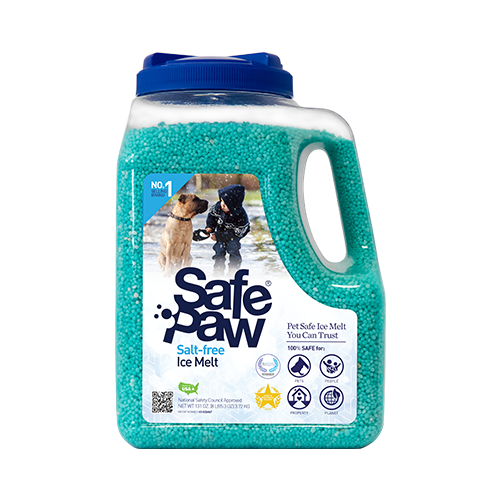
Safe Paw
The Original and the #1 Pet and Child Safe Ice Melt for over 20 years. Guaranteed environmentally safe – will not harm waterways and sensitive wetlands.
You need to prevent the formation of ice dams in the first place to avoid the damage they inflict. Some ways of prevention are removing snow from your roof, while others entail reducing the temperature of your attic to prevent heat transfer from the attic to the roof.
After a snowfall, rake the lower three to four feet of your roof. Rake the lower section of your roof clear of snow immediately after a snowfall while the snow is still soft. It will aid in the reduction of ice formation. But it is a risky task and should be done with proper precautions and traction agents.
Insulate the attic to prevent heat from escaping through the roof, which causes the thaw/freeze cycle. It will also help in heat retention within your home, resulting in lower heating costs during the winter.
Some people choose not to use ice melt for roofs to save money. Slips and falls can occur if ice melt is not used. Hence, take steps to keep people from slipping by using a safe ice melt and applying it evenly. Protecting family members and visitors begins far before the snow begins to fall.
Overuse of roof ice melt can result in the product being tracked inside the facility needlessly. When applying ice melt and other treatments, proper application is critical. It can burn vegetation around if used in excess.
Sometimes people use roof ice melters incorrectly without reading instructions and over-apply or under-apply them. It’s crucial to read the ice melt application instructions to figure out how much to use it effectively.
Get ready for winter with the ONLY Pet Safe Ice Melt you can trust
11 Things To Look For In An Ice Melt For Roofs
There are a variety of ice melt products available in the market. While purchasing an ice melt for your roof, you need to look for some crucial aspects. Here is a list of 11 such things that will help you choose the best ice melt.
1.Safe for shingles
Ice melts made with regular rock salt or chloride are more effective than those made with naturally occurring components. Furthermore, repeated use can harm roof tiles and shingles, making them difficult to handle and costly to replace.
2. Safe for metals
Chloride in salts increases water conductivity and accelerates corrosion, whether in a blended product or not. All salts can erode concrete, whether new or old. Salt also damages your roof shingles. It may cause corrosion of reinforcing rods and structural steel, causing irreversible harm to structural integrity.
3. Leaves no residue behind
Salt-based ice melts are known to leave behind a white residue or messy surface. The ideal roof ice melter should neither discolor your shingles nor leave behind any residue on the roof or indoor carpet areas. The natural salt-free ice melts are easy to clean and do not require time taking to clean up.
4. Pet safe
Even though many ice melt claims to be pet safe, they do damage the paws of your furry friends. The best roof ice melt should be safe for your pets and also for the roof. The salt-free ice melt is free from toxic chemicals and their round pellets do not injure or bleed paws. In case they are accidentally ingested by pets, they do not cause serious threats or injury.
Get ready for winter with the ONLY Pet Safe Ice Melt you can trust
5. Plant safe
Dehydration is caused by salt, particularly rock salt, which causes plant damage. Salt also causes injury to new seed germination, stems, leaves, and flowers by inhibiting root growth, disrupting nutrient uptake. There are ice melt products that are free from salts and have ingredients that promote plant growth. You can safely use these ice melts without worrying about the loss of greenery in your vicinity.
6. Environmentally safe
Contaminants from ice and snow melting salt infiltrate groundwater, discharge into surface water and storm drains, contaminating freshwater resources. Use an ice melt that is natural and salt-free and play the role of a responsible citizen.
7. Effective in all temperatures
The ideal roof ice melt needs to melt ice quickly and effectively. The efficiency of any ice melt is determined by the time it takes to melt the ice on the roof and the quantity required. It should be effective in all temperatures and surfaces.
8. Long-lasting effect
Your roof de-icer should be good enough to last for at least a day during and after the snowstorm. There is ice melt which gives 72 hours long-lasting effect and prevents the sticking of ice on your roof. They provide your roof Teflon cover and also eliminates the tiring task of shoveling.
9. Long shelf life
An ideal ice melt should have a long shelf life. Many ice-melts in the market cannot be stored for even a few months as they become sticky. On the other hand, a natural salt-free ice melt has a long shelf life and can be stored in airtight containers for the next season.
10. Easy to see and sprinkle
You can’t just throw ice melt on the roof and hope for the best. It must be done meticulously otherwise, you risk overusing or underusing it. It could also end up costing you a lot of money in the long run when the ice melts.
Colored pellets of ice melt help you to disperse them evenly and you don’t need to go on a slippery roof to use it. You can do it safely from a distance.
11. Provides traction
Your roof ice melt should not only melt ice but provide traction too. Slips and falls are common incidents during snowy periods, but good traction can easily make your premises free from such mishaps. The traction agent present in roof ice melt will lower your legal liability while keeping your family safe.
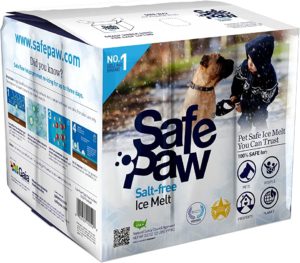
Safe Paw
The Original and the #1 Child and Pet Safe Ice Melt for over 20 years. Guaranteed environmentally safe – will not harm waterways and sensitive wetlands.
Type Of Chemicals To Avoid In A Roof Safe Ice Melt
How To Select The Best Ice Melting For Roofs?
You need to have a thorough understanding of your roofs and surfaces before choosing an ice melt product. Always protect yourself by wearing protective clothing while using ice melters for the roof.
Select an ice melt product with the fewest side effects to keep everyone safe and happy, including your infrastructure.
To prevent water from leaking in, use a water repellent substance beneath your roof.
The best recommendation for using ice melt solutions on your roof is to make sure that no ice dams form. The ideal ice melters for the roof draws sunlight during the day, which gives it greater heating power and a faster ice melting rate. Thus, it does not allow any ice accumulation on your roof.
Is It Safe To Put Ice Melt On A Roof?
Safety is a top concern when it comes to using ice melt on your roof. Traditional chemical-based ice melts can be damaging to roof materials and harmful to pets that might ingest it accidentally. But don’t let this deter you from the use of all ice melts. The key is to choose a roof safe ice melt, like Safe Paw, which is formulated to be effective yet harmless to your roofing materials, pets, and the surrounding environment.
Conclusion
Using an ice melt safe for roof shingles will help to protect your shingles and gutters. Supermarkets, hardware stores, home centers, and other retail outlets sell ice melters suitable for the roof.
Opt for a roof-safe ice melt, free from salts and harmful chemicals to ensure long-lasting safety for your roof and family. Its traction compound is salt-free, chlorine-free, and acetate-free, and it provides slide resistance for more than 72 hours on the surface. This ideal ice melter for the roof is completely safe for your plants, pets, shingles, concrete, bricks, asphalt, metal, and the environment.
Get ready for winter with the ONLY Pet Safe Ice Melt you can trust
Other Ice Melt Products
Traction Magic
Stay safe on slippery surfaces with a product that’s 100% natural and safe for pets, people, and your property. Use Traction Magic on sidewalks, steps, or as instant traction for your car.
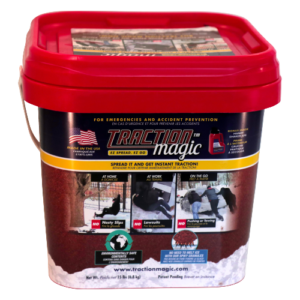
Safe Thaw
Imagine an ice melt you can put down and never worry about. It won’t harm pets, kids and your property. That’s Safe Thaw. Unlike anything else on the market, Safe Thaw can change how winter affects our planet.
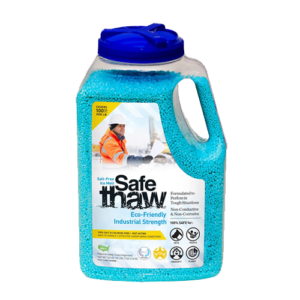


Author: Shweta Saxena
Shweta, a passionate pet lover and environmental advocate, has dedicated herself to promoting winter safety for pets. Living amidst the scenic, snowy landscapes of Canada, she expertly merges her love for animals with her exceptional writing talents. Her commitment is deeply rooted in ensuring the well-being of pets during the harsh winter months.



